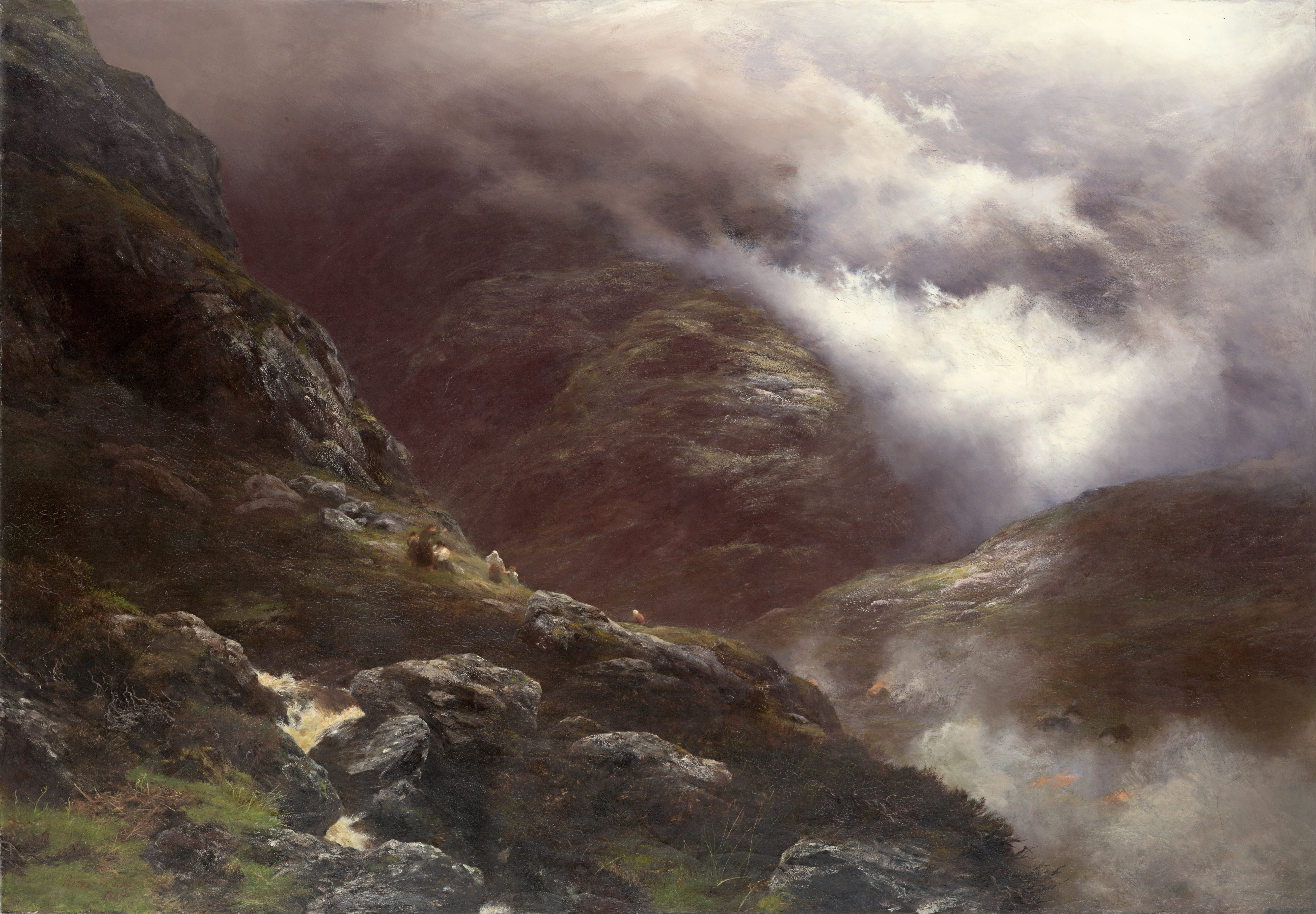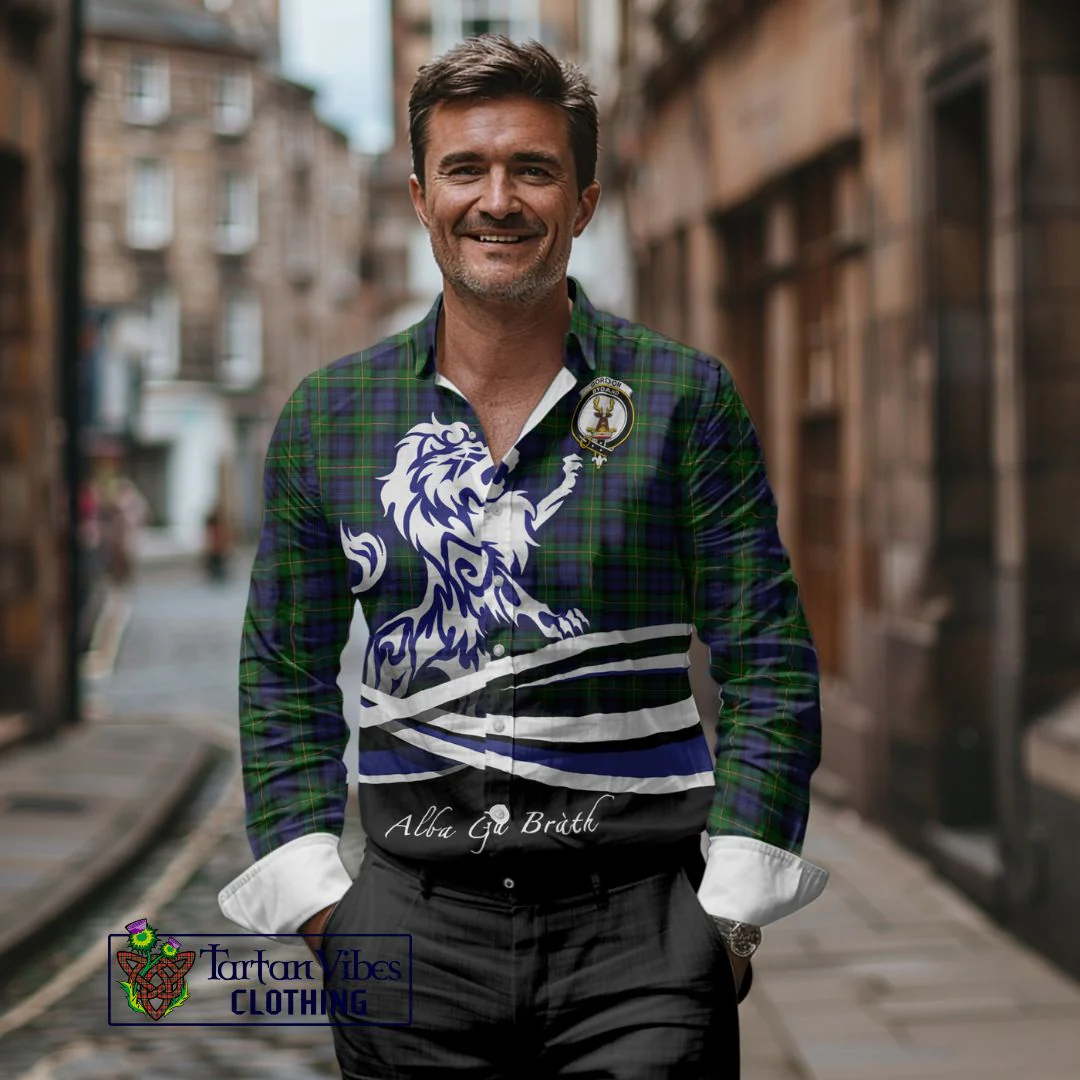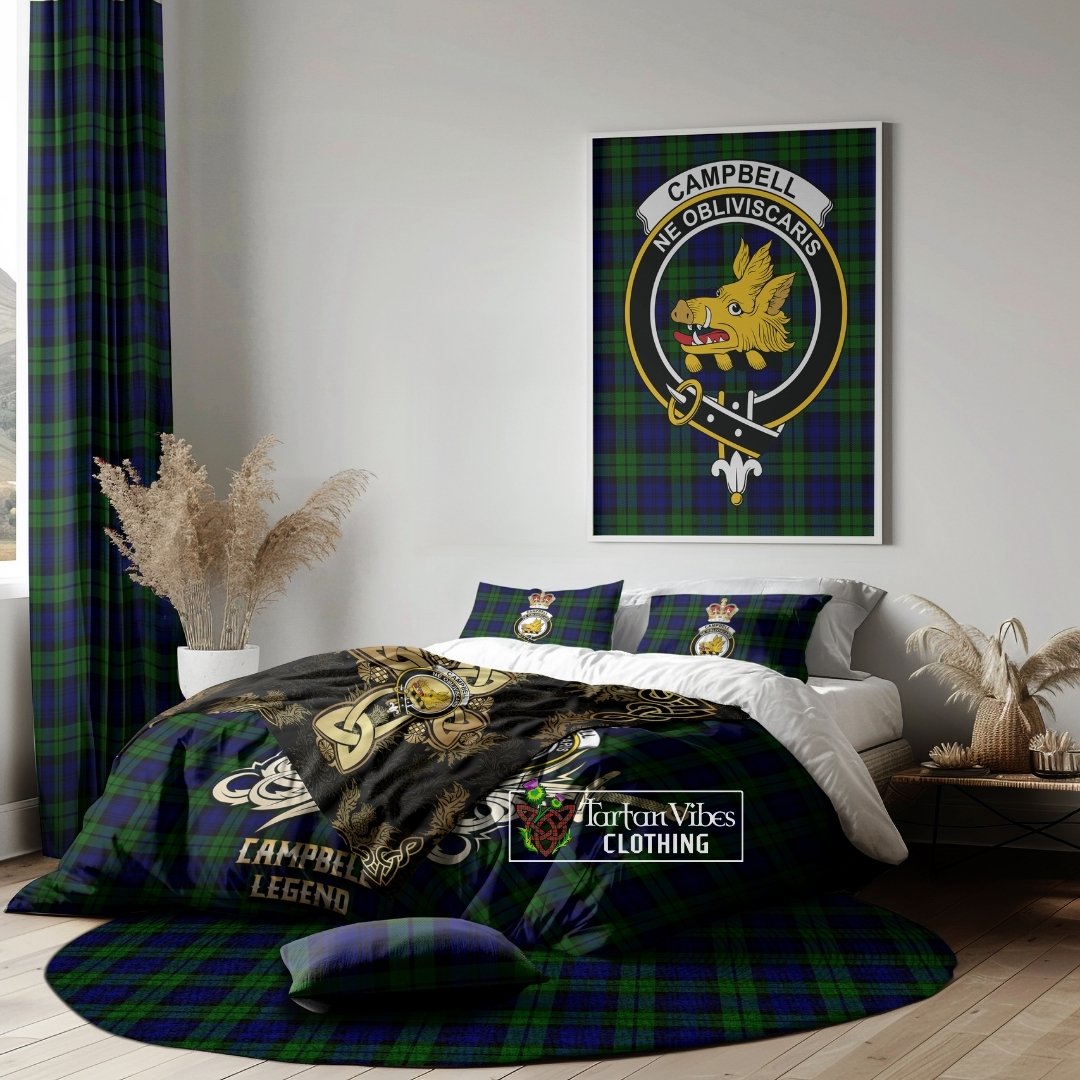Campbell Family Tree: History, Legacy, and Clan Power
by Teresa Finn on Apr 25, 2025
Table of Content
Introduction
Ever wondered how a name can echo through the pages of history like the rumble of Highland thunder? That’s the Campbell name for you.
From crooked-mouthed beginnings to dukedoms, battlefield glory, and even scandal, the story of the Campbells isn't just a family history—it’s practically the plot of a Highland epic. This isn’t just about who begat whom. It's about power, loyalty, betrayal, and a legacy that still commands respect in castles and conference rooms alike. So, grab your kilt (metaphorically), and let’s walk through the winding corridors of the Campbell family tree.
What is the Campbell Family Tree?
Imagine a family so influential that their surname became shorthand for strength and strategy across Scotland. That’s the Campbells for you.
Their story begins not with gold or grandeur but with a nickname—Caimbeul in Gaelic, meaning “crooked mouth”. Not exactly noble-sounding, right? But as history would have it, those early Campbells didn’t need the perfect smile—they had grit, cunning, and ambition. And with those, they climbed from local lords to dukes and global figures.
The Campbell family tree is more than branches and birthdates. It’s a sprawling, vivid account of clan loyalty, royal favor, and Highland tenacity.

Early Ancestors & Historical Roots
From Strathclyde’s Mist to Loch Awe’s Shores
Long before they wore titles or waged battles, the Campbells hailed from the ancient Britons of Strathclyde. We’re talking pre-1300s here—a time when clans were more than families; they were your army, your identity, your survival.
The first Campbell on record? A man named Gillespie. But the real game-changer was a savvy marriage: a Campbell married into the Ó Duibhne family, gaining control of the Loch Awe territory. That's when things really took off.
Their early home? A formidable stone fortress on Loch Awe called Innes Chonnel Castle. Picture mossy walls, echoing hallways, and the kind of Highland drama that would make “Game of Thrones” blush.

MacCailein Mór – The Legend Begins
Enter Colin Mor Campbell—Colin the Great. He wasn’t just a leader; he was the blueprint for every chief who followed. His Gaelic title, MacCailein Mór, is still used today by the Duke of Argyll, the clan's chief. That’s some serious staying power.
Colin’s son, Sir Neil Campbell, didn't just inherit power—he married into it. His wife was the sister of none other than King Robert the Bruce. With that kind of royal brother-in-law, Neil wasn’t just in the room where it happened—he helped make it happen.
From these early Highland beginnings, the Campbell family tree began branching across centuries, built on alliances, marriages, and military might.
Powerful Branches of the Campbell Family
1. Campbell of Argyll
This is the main trunk of the tree. From the Earls to the Dukes of Argyll, they were movers and shakers in Scottish politics, commanding armies and attending royal courts.
2. Campbell of Breadalbane and Holland
3. Campbell of Cawdor
4. Campbell of Glenorchy
5. Campbell of Loudoun
6. Campbell of Inverawe
7. Campbell of Strachur
8. Campbell of Skipness
9. Campbell of Auchinbreck
10. Campbell of Glen Lyon
Clan Feuds, Conflicts & Highland Alliances
Ah, the Highland clans. Loyalty was fierce—but so were the grudges. The Campbells had their fair share of both.
Versus the MacDonalds
It’s the Hatfield and McCoys of Scotland. The feud ran deep and blood-stained, culminating in the Massacre of Glencoe in 1692. It wasn’t just a betrayal—it was a nightmare, with soldiers turning on their hosts after sharing food and fire. Though not every soldier was a Campbell, the name carried the blame.

⚔️ The Campbells didn’t just shape Scotland—they stirred deep resentment too. Why is the Campbell Clan Hated?
The Battle of Inverlochy
In 1645, things got fiery when Montrose’s forces (backed by MacDonalds and Macleans) crushed the Campbells. Castle Campbell was torched, and revenge simmered for generations.

🔍 Want to dive deeper into this bloody Highland turning point? Read more about the Battle of Inverlochy (1431) and its impact on Scottish clans.
Glenlivet and Langside
The Drowning of Clan Arthur
One of the darker footnotes in Campbell's history? The 1567 drowning of Clan Arthur, a minor but proud clan that had risen in local prominence near Loch Awe. During a skirmish with the Campbells of Inverawe, Duncan MacArthur and his son were among those forced into the loch. The violence was shocking enough to earn a royal pardon afterwards—a chilling chapter in Highland justice.
The Battle of Altimarlech
Now, here’s a tale wrapped in legend: the 1680 clash between the Campbells and the Sinclairs at Altimarlech. Disputes over land and title erupted into a full-scale battle. The Campbells claimed victory, and according to myth, the Sinclairs fell in such number that the Campbells could “walk across the river without getting their feet wet.” Fact or folklore, it paints a vivid picture of how brutal—and poetic—clan warfare could be.
Legacy & Modern Presence
The Dukes Today
The current Duke, Torquhil Ian Campbell, isn’t leading troops, but he’s no stranger to leadership. Besides managing Inveraray Castle and representing the clan globally, he’s played—and won—elephant polo for Scotland. Yes, you read that right.
Inveraray Castle

Campbells Around the World
The Campbell name isn’t just rooted in Scotland—it’s thriving globally. Whether through online archives or clan gatherings, interest in Campbell family genealogy continues to grow as descendants around the world seek to uncover their place in this powerful Highland legacy.
From the U.S. to Australia, Campbells have carried their legacy across oceans. Clan societies worldwide keep the spirit alive through cultural festivals, storytelling, and Highland games. Whether it’s a tartan parade in Canada or a Burns Night in Sydney, the global Campbell community proudly honors its roots. No matter where they are, Campbells don’t forget where they came from.
🛍️ Shop the Campbell Legacy
Celebrate your Highland heritage in style with curated pieces from Tartan Vibes Clothing, designed to carry the spirit of Clan Campbell into your everyday life.
👕 Campbell Tartan Polo Shirt
From boardrooms to weekend getaways, this Campbell Tartan Polo Shirt blends elegance with heritage. The all-over 3D Scottish pattern adds character, while the moisture-wicking polyester keeps you cool and sharp. With sizes from S to 6XL, it’s perfect for everything from formal events to laid-back adventures.


👕 Campbell of Breadalbane Tartan T-Shirt
Vibrant and bold, this T-shirt captures the essence of Scottish pride. Whether you're at the gym, on a stroll, or celebrating with friends, the Campbell of Breadalbane Tartan T-Shirt is your go-to piece for comfort and impact. Available in sizes for men, women, and kids—there’s a fit for every member of the clan.


👔 Campbell Tartan Long Sleeve Button-Up Shirt
Smart and sleek, this button-up shirt is a perfect fusion of tradition and modern versatility. Made from four-way stretch fabric, it offers ease of movement and a polished silhouette. Pair it with jeans for casual wear or trousers for a formal Highland look—available in S to 6XL.


🧢 Campbell Tartan Jeff Hat
Top off your outfit with this classic flat cap. The Campbell Tartan Jeff Hat features soft fabric, an adjustable fit, and timeless charm. Whether you’re dressing up or keeping it casual, this hat brings a subtle yet powerful nod to Scottish heritage.

🛏️ Campbell Tartan Bedding Set with Clan Crest & Golden Sword
Turn your bedroom into a Highland retreat. Featuring a stunning full-color print of the Campbell clan crest and the golden sword of courageous legacy, this bedding set includes one duvet cover and two pillowcases crafted from luxurious brushed polyester. It’s lightweight, cozy, machine-washable, and sure to make a bold statement in any home.

Conclusion
The Campbells' story is Scotland’s story in miniature—brave, bruised, and brilliant. From ancient Strathclyde to royal courts and global boardrooms, this clan’s saga is a thrilling ride through time. Their influence is immeasurable. Their legacy is still growing.
So the next time you hear the name “Campbell”, don’t just think of tartan and castles—think of battles won, alliances forged, and a family that never backed down.
Frequently Asked Questions
What nationality is the name Campbell from?
The name Campbell is primarily of Scottish origin, derived from the Gaelic Caimbeul, meaning "crooked mouth." It is most famously associated with the powerful Highland clan of Argyll. However, the name also has roots in Irish history, where it was sometimes adopted as an Anglicized form of Mac Cathmhaoil. Over time, Campbell has become a widely recognized surname across Scotland, Ireland, and English-speaking countries worldwide.
Who are the Campbells descended from?
The Campbells have one of the largest cadet families, descended from the sons of clan chiefs, of any clan in Scotland. The ongoing study is likely to take some time to develop solid conclusions on the earlier history of the Glenorchy lineage, but the researchers have proposed several possibilities.
Were the Campbells protestant or Catholic?
Members of Clan Campbell were linked to Lollardy and Protestantism from the start, with the Campbells of Cessnock caught up in the heresy trial of the Lollards of Kyle in 1494
What is the Campbell clan motto?
The Campbell clan motto is “Ne Obliviscaris,” which means “Forget Not.” It reflects the family's deep pride in heritage, honor, and lasting loyalty to their legacy.











